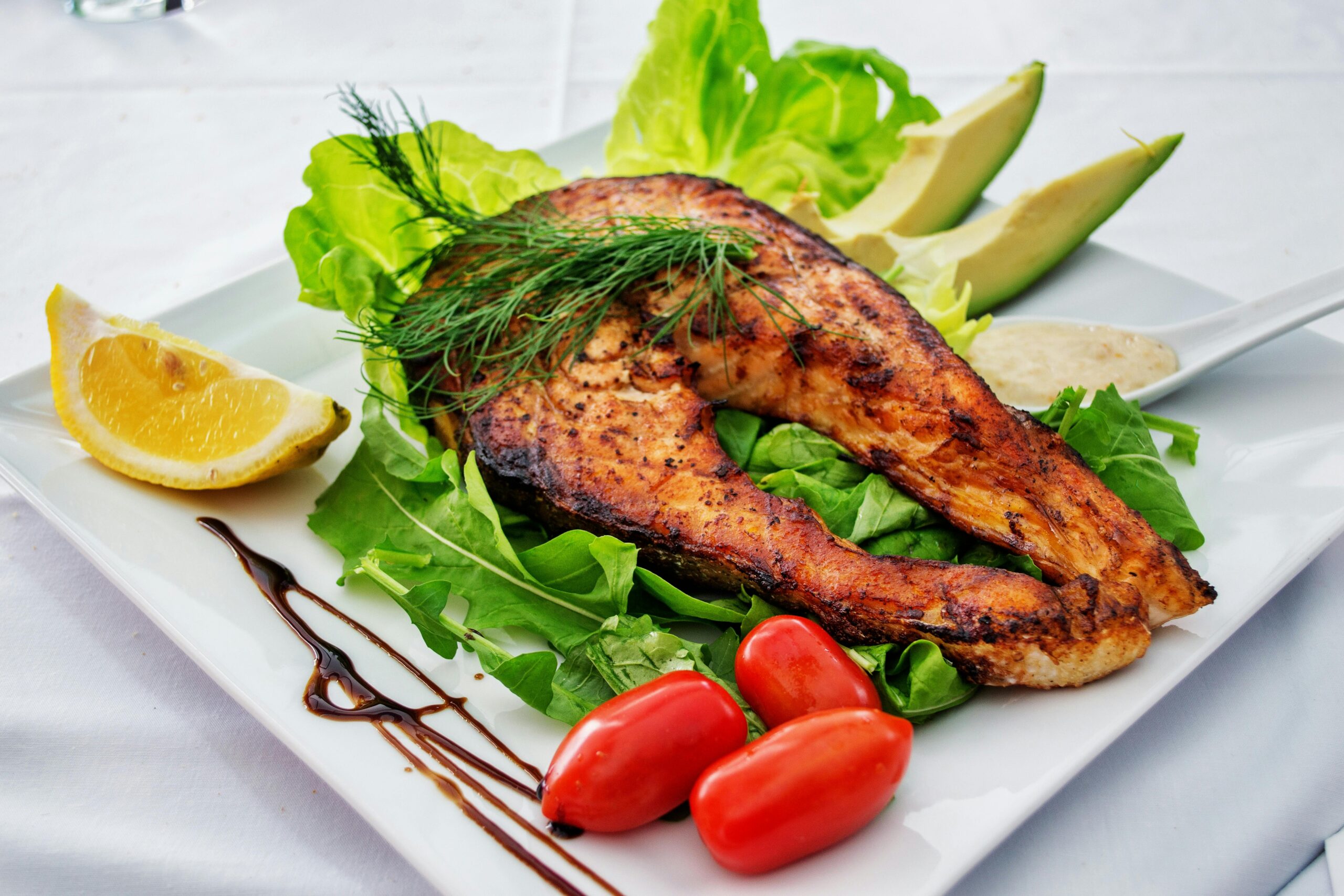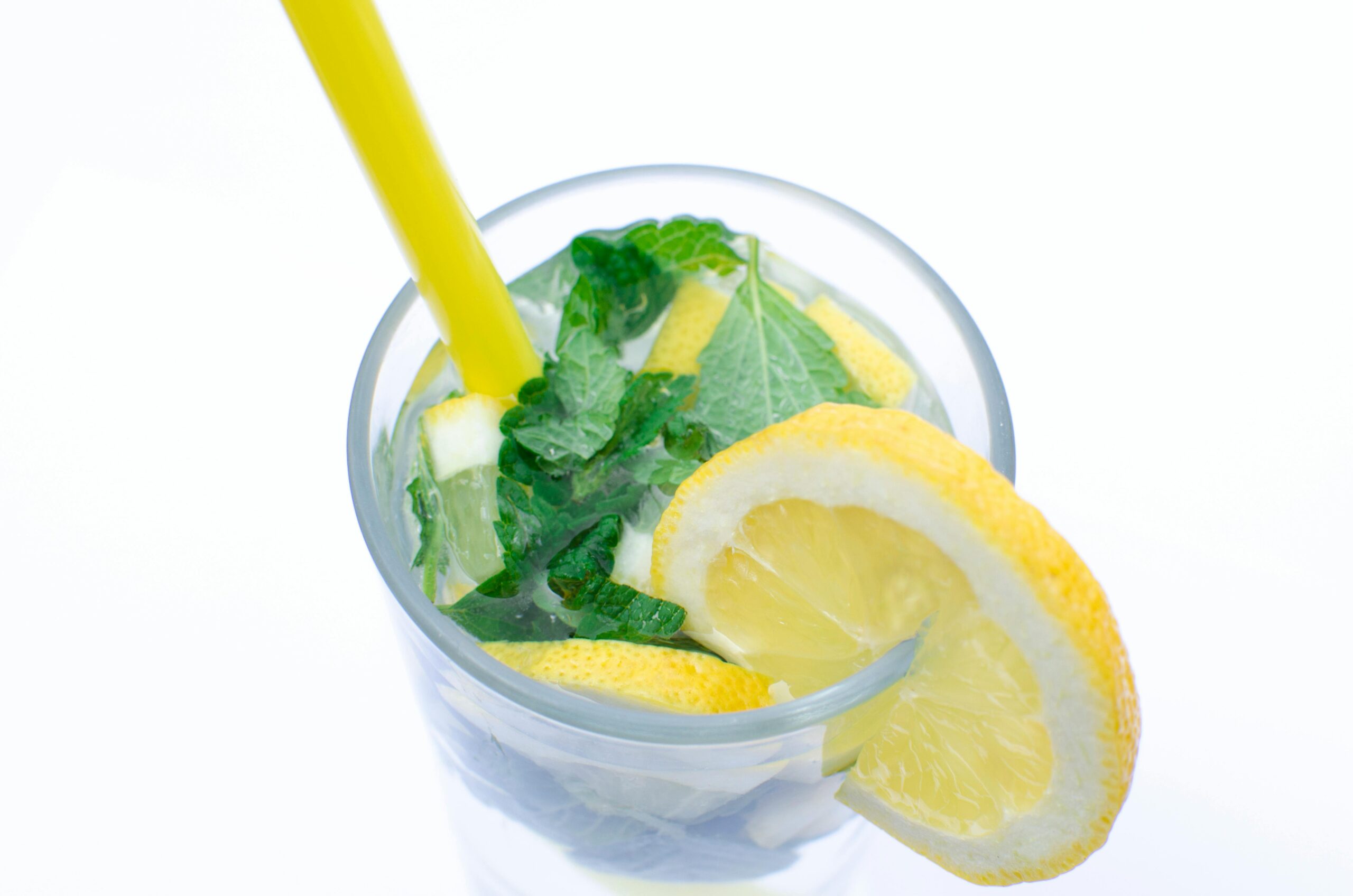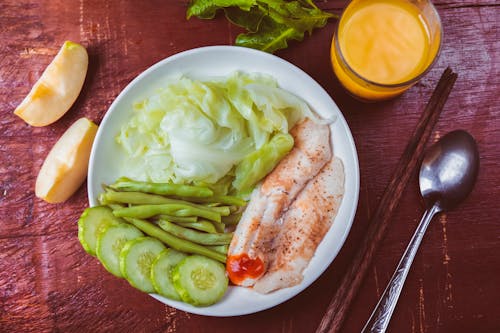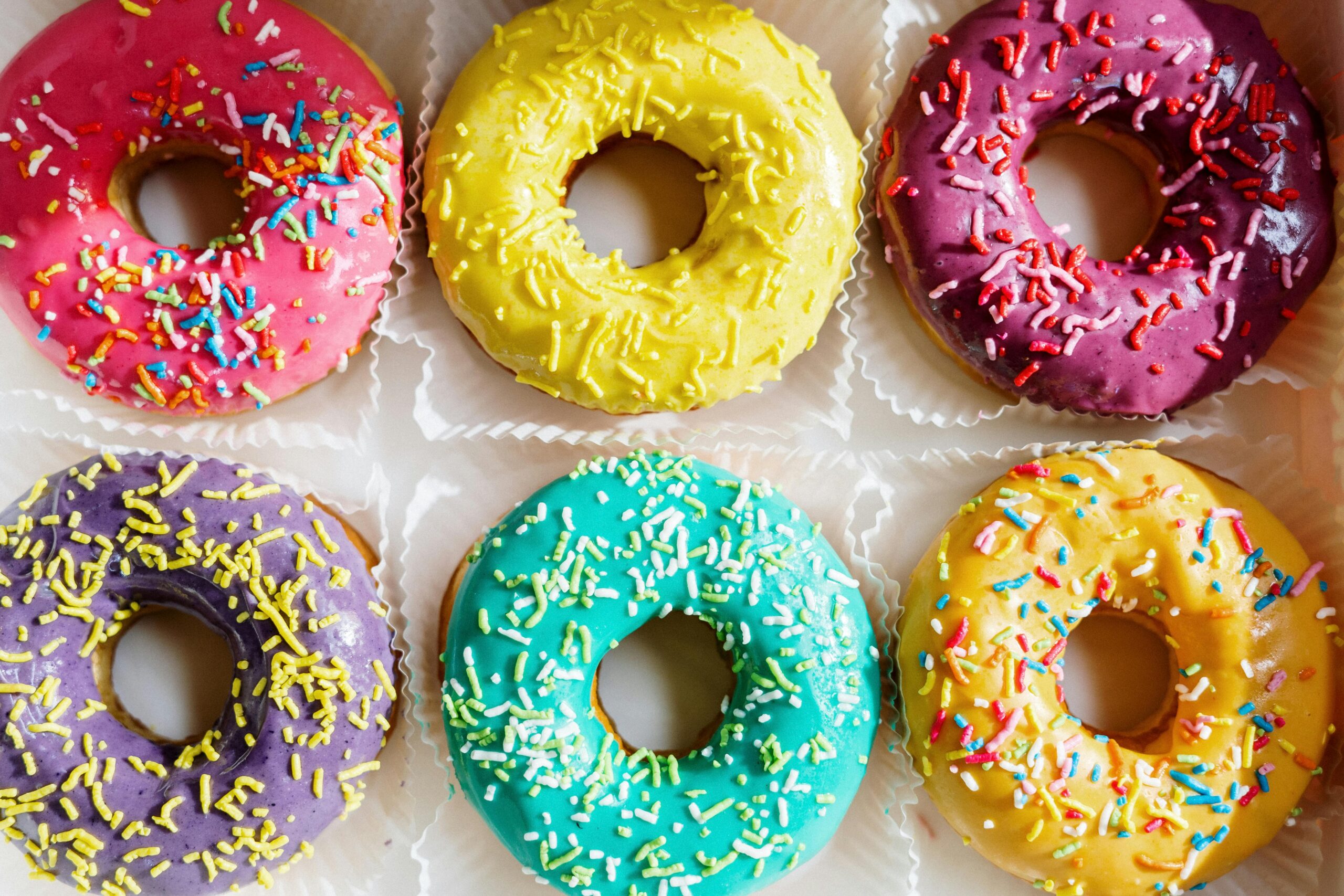Picture this: You’re standing in your kitchen at 3 PM, staring into the fridge with that familiar rumbling in your stomach. Again. You had lunch just two hours ago, but somehow you’re already hunting for your next snack. Sound familiar?
Here’s the thing: what you ate for lunch might be the culprit. If your meal was heavy on refined carbs and light on protein, you’ve essentially set yourself up for this afternoon hunger spiral.
I’ve been there, trust me. The constant snacking, the energy crashes, the frustration of feeling hungry even when you’re trying to lose weight. However, it was the understanding of the incredible power of high-protein foods for weight loss that changed everything for me.
Protein isn’t just some boring macronutrient that bodybuilders obsess over. It’s your secret weapon for sustainable weight loss, and I’m about to show you exactly why.
Why Protein is Your Weight Loss Game-Changer
Let’s get one thing straight: protein for weight loss isn’t a fad or some trendy diet hack. It’s pure science, and the research is compelling.
The Thermic Effect: Your Internal Furnace
Here’s something that blew my mind when I first learned it. Your body burns calories just to digest food – it’s called the thermic effect of food (TEF). But here’s the kicker: protein has the highest thermic effect of all macronutrients.
While your body uses about 8-15% of calories to digest carbs and fats, it burns a whopping 20-30% of protein calories just for digestion. That means if you eat 100 calories of protein, your body automatically torches 20-30 of those calories in the process. It’s like having a built-in calorie incinerator.
The Satiety Superpower
Remember that 3 PM fridge raid I mentioned? Protein foods for weight loss solve this problem beautifully. Protein triggers the release of hormones like GLP-1 and PYY, your body’s natural appetite suppressants. These hormones tell your brain, “Hey, we’re good here. No more food needed.”
Studies show that people who eat high-protein foods naturally consume 400-500 fewer calories per day without even trying. That’s not willpower, that’s biology working in your favor.
Muscle Preservation Magic
Here’s where most diets go wrong. When you cut calories, your body doesn’t just burn fat; it also breaks down muscle tissue. And less muscle means a slower metabolism, making it harder to keep weight off.
But protein for muscle retention changes this equation entirely. Adequate protein intake signals your body to preserve precious muscle mass while preferentially burning fat stores. It’s like telling your metabolism, “Don’t worry, we’re not starving, keep that furnace burning hot.”
The Best High-Protein Foods for Weight Loss
Now let’s talk about the stars of the show, the best protein foods for weight loss that should be filling your shopping cart.
Lean Animal Proteins: The Heavy Hitters
Chicken Breast: The classic for good reason. At 25 grams of protein per 100 grams with minimal fat, it’s like the Swiss Army knife of protein sources. I love grilling a bunch on Sunday and using it throughout the week.
Turkey Breast: Often overlooked but incredibly versatile. It’s slightly leaner than chicken and has this subtle flavor that works in everything from stir-fries to salads.
Salmon: Don’t let the higher fat content fool you; those omega-3s are metabolism boosters. Plus, salmon keeps you satisfied for hours. I call it “the protein that thinks it’s a superfood.”
Lean Beef: Choose cuts like sirloin or eye of round. Yes, red meat can be part of a weight loss plan when you pick the right cuts.
Eggs: The original fast food. Six grams of complete protein per egg, plus they’re incredibly satisfying. I’ve never met anyone who binged on hard-boiled eggs.
Dairy Powerhouses
Greek Yogurt: Not all yogurts are created equal. Greek yogurt packs about twice the protein of regular yogurt, around 15-20 grams per serving. Just watch those sneaky added sugars.
Cottage Cheese: I know, I know – it’s not winning any beauty contests. But 14 grams of protein per half-cup? That’s serious weight loss ammunition.
Plant-Based Protein Champions
Lentils: These little legumes are protein powerhouses with about 18 grams per cooked cup. Plus, they’re loaded with fiber, creating the ultimate satiety combo.
Chickpeas: Whether roasted as a snack or blended into hummus, chickpeas deliver both protein and fiber. They’re like the friendly, approachable cousin of the legume family.
Tofu: Before you roll your eyes, hear me out. Tofu is like a protein chameleon; it takes on whatever flavors you give it. Plus, 10 grams of protein per half-cup isn’t nothing.
Edamame: These little green gems are perfect for snacking. One cup delivers 17 grams of protein and tastes good straight from the freezer bag.
Nuts and Seeds: Small but Mighty
Almonds: About 21 grams of protein per 100 grams, plus healthy fats that keep you satisfied. Just watch portions, they’re calorie-dense.
Chia Seeds: Don’t let their size fool you. Two tablespoons pack 5 grams of protein plus omega-3s and fiber. They’re like tiny nutritional bombs.
Pumpkin Seeds: Crunchy, satisfying, and loaded with protein. They’re perfect for sprinkling on salads or eating as a snack.
Low Calorie High Protein Foods: Maximum Impact, Minimum Calories
When you’re trying to lose weight, you want low-calorie, protein foods that give you the biggest bang for your caloric buck.
| Food | Calories per 100g | Protein per 100g | Protein per Calorie |
| Chicken Breast | 165 | 31g | 0.19g |
| White Fish (Cod) | 85 | 18g | 0.22g |
| Egg Whites | 52 | 11g | 0.21g |
| Shrimp | 99 | 18g | 0.18g |
| Turkey Breast | 135 | 30g | 0.22g |
| Cottage Cheese (Low-fat) | 99 | 11g | 0.11g |
| Greek Yogurt (Non-fat) | 59 | 10g | 0.17g |
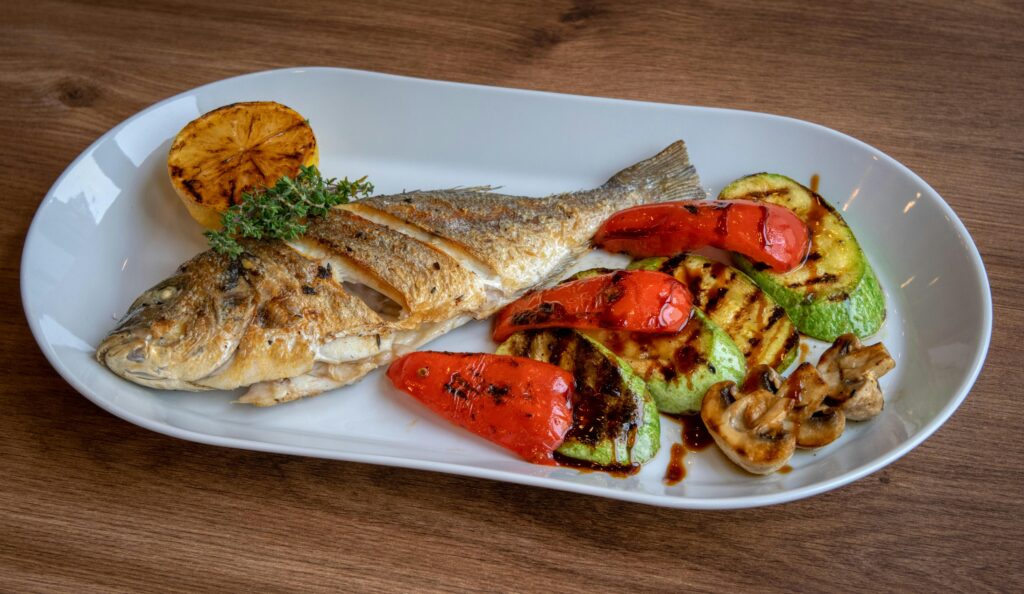
These foods are your weight loss secret weapons – they flood your system with muscle-preserving, appetite-suppressing protein without breaking your calorie bank.
High-Protein Meal Ideas That Taste Good
Let’s be real, knowing which foods are high in protein is only half the battle. The other half is making them taste so good that you want to eat them. Here are some high-protein meal ideas that have saved my sanity (and my taste buds).
Breakfast: Starting Strong
The Power Bowl: Greek yogurt topped with berries, a sprinkle of granola, and a tablespoon of chia seeds. About 25 grams of protein, and it feels like dessert for breakfast.
Veggie Scramble Supreme: Three eggs scrambled with spinach, bell peppers, and a quarter cup of cottage cheese mixed in. The cottage cheese creates this creamy texture that’s divine.
Protein Pancakes: Blend one banana, two eggs, and a scoop of protein powder. Cook like regular pancakes. Kids think they’re getting a treat, you know they’re getting 30+ grams of protein.
Lunch: Midday Momentum
Mason Jar Salads with Protein: Layer your favorite veggies with chickpeas, grilled chicken, or hard-boiled eggs. The key is keeping wet ingredients at the bottom so everything stays fresh.
Tuna and White Bean Salad: Mix canned tuna with white beans, cherry tomatoes, and a light vinaigrette. It’s like a Mediterranean vacation in a bowl.
Turkey and Hummus Wrap: Use a large whole wheat tortilla, spread hummus, add sliced turkey, cucumber, and spinach. Roll tightly and slice in half.
Dinner: Evening Satisfaction
Sheet Pan Salmon and Vegetables: Toss broccoli, bell peppers, and zucchini with olive oil, season salmon fillets, and roast everything together. One pan, minimal cleanup, maximum protein.
Lentil Curry: Simmer red lentils with coconut milk, curry spices, and vegetables. Served over cauliflower rice, it’s comfort food that loves you back.
Stuffed Bell Peppers: Mix ground turkey with quinoa, diced tomatoes, and spices. Stuff into bell peppers and bake. It’s like a complete meal in an edible bowl.
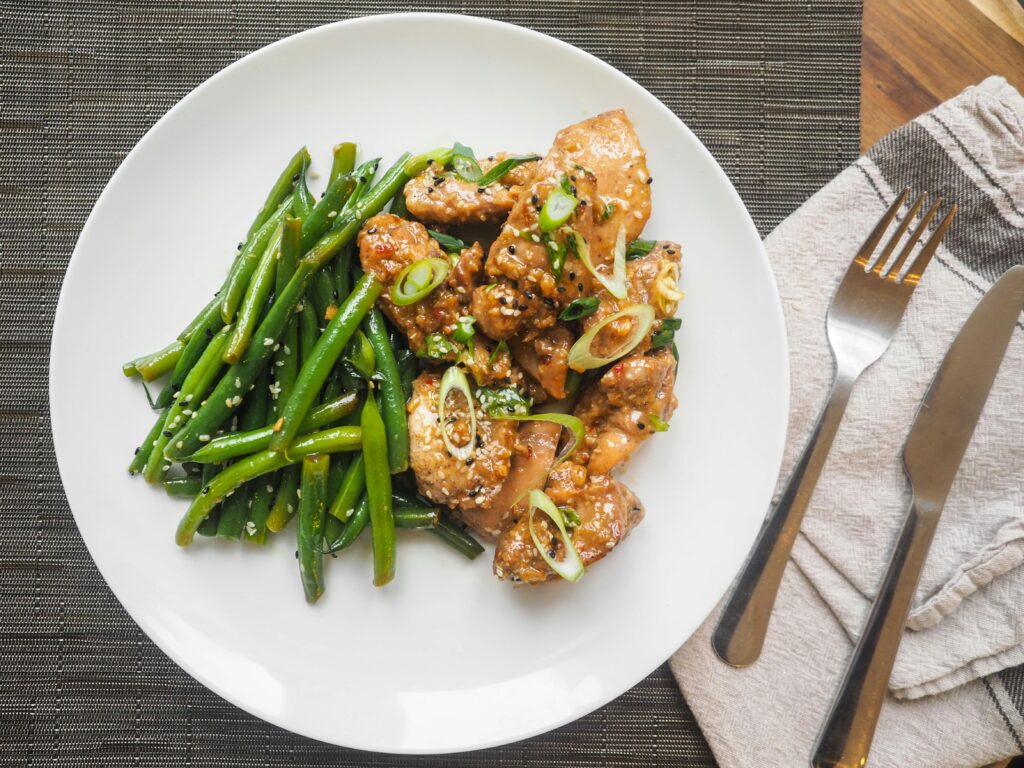
Your 7-Day High Protein Meal Plan for Weight Loss
Planning is where the magic happens. Here’s a sample high-protein diet plan that takes the guesswork out of your week:
Day 1
- Breakfast: Greek yogurt parfait with berries and almonds (25g protein)
- Lunch: Grilled chicken salad with chickpeas (35g protein)
- Dinner: Baked salmon with roasted vegetables (30g protein)
- Snacks: Hard-boiled egg and apple slices (6g protein)
- Daily Total: ~96g protein
Day 2
- Breakfast: Protein smoothie with spinach, banana, and protein powder (28g protein)
- Lunch: Turkey and hummus wrap with vegetables (25g protein)
- Dinner: Lentil curry with a side of Greek yogurt (32g protein)
- Snacks: Cottage cheese with cucumber slices (14g protein)
- Daily Total: ~99g protein
Day 3
- Breakfast: Veggie omelet with cottage cheese (22g protein)
- Lunch: Tuna salad over mixed greens (28g protein)
- Dinner: Grilled chicken breast with quinoa and steamed broccoli (35g protein)
- Snacks: Handful of almonds (6g protein)
- Daily Total: ~91g protein
Continue this pattern through Day 7, varying proteins and preparation methods.
The beauty of this approach? You’re getting 90-100 grams of protein daily without feeling deprived or bored.
The Science Behind Protein and Weight Loss
Let’s dive deeper into why protein benefits for weight loss are so profound. Understanding the science helps you stick with the plan when motivation wanes.
Metabolic Advantage
Protein and metabolism have a special relationship. Beyond the thermic effect we discussed, protein helps maintain your metabolic rate during weight loss. Studies show that people on higher protein diets maintain up to 25% more of their metabolic rate compared to those on lower protein diets.
Think of it this way: your metabolism is like a fire. Carbs and fats are like paper; they burn quickly and hot, but don’t sustain the flame. Protein is like hardwood; it burns slower, hotter, and keeps that metabolic fire burning longer.
Appetite Control Mechanisms
The protein appetite control effect isn’t just in your head. Protein affects multiple hunger and satiety hormones:
- Ghrelin (your hunger hormone) decreases
- PYY and GLP-1 (your fullness hormones) increase
- Leptin sensitivity improves (your body gets better at recognizing when it’s had enough)
It’s like having a personal appetite management system that works with your body instead of against it.
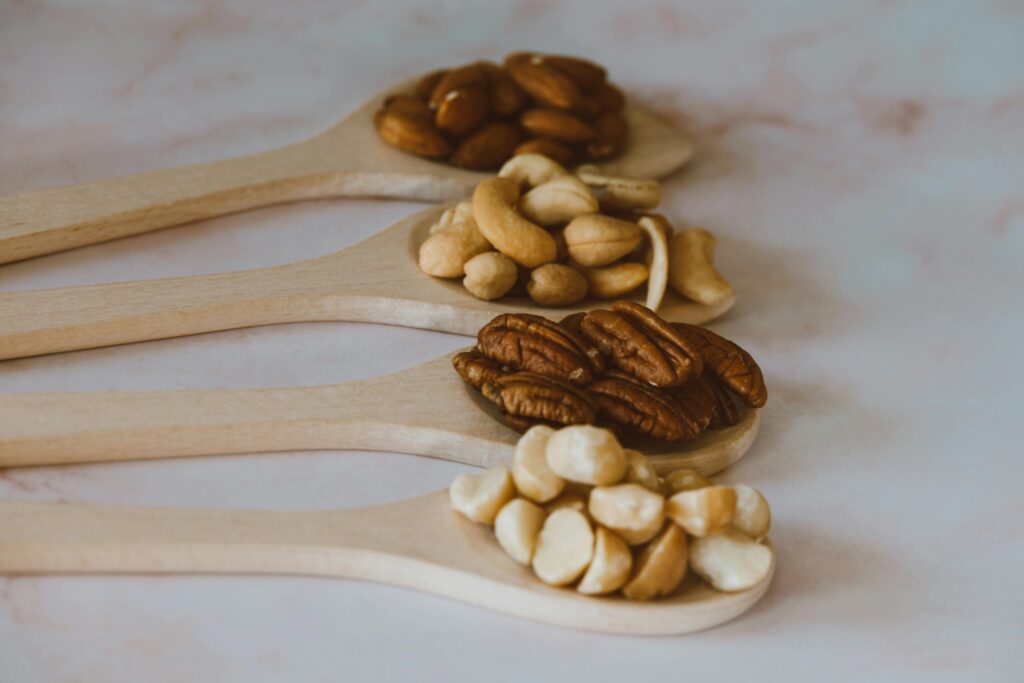
Fat Loss vs. Muscle Loss
Here’s where things get interesting. Protein for fat loss works through something called “body recomposition.” Instead of just losing weight (which could be muscle, fat, or water), adequate protein intake helps ensure you’re losing the right kind of weight: fat.
Research shows that people consuming 1.6-2.2 grams of protein per kilogram of body weight maintain significantly more muscle mass during weight loss. More muscle means higher metabolism, which means easier weight maintenance.
Common Protein Myths Busted
Let’s address some protein misconceptions that might be holding you back:
Myth 1: “Too much protein damages your kidneys.”
Reality: If you have healthy kidneys, high protein intake is perfectly safe. This myth comes from studies on people with existing kidney disease.
Myth 2: “You can only absorb 30 grams of protein per meal.”
Reality: Your body can absorb much more than 30 grams at once. This arbitrary limit has no scientific basis.
Myth 3: “Plant proteins are incomplete.”
Reality: While individual plant proteins may lack certain amino acids, eating a variety throughout the day provides all essential amino acids.
Myth 4: “Protein makes you bulky.”
Reality: Protein alone doesn’t build massive muscles. That requires specific training, genetics, and often hormonal factors.
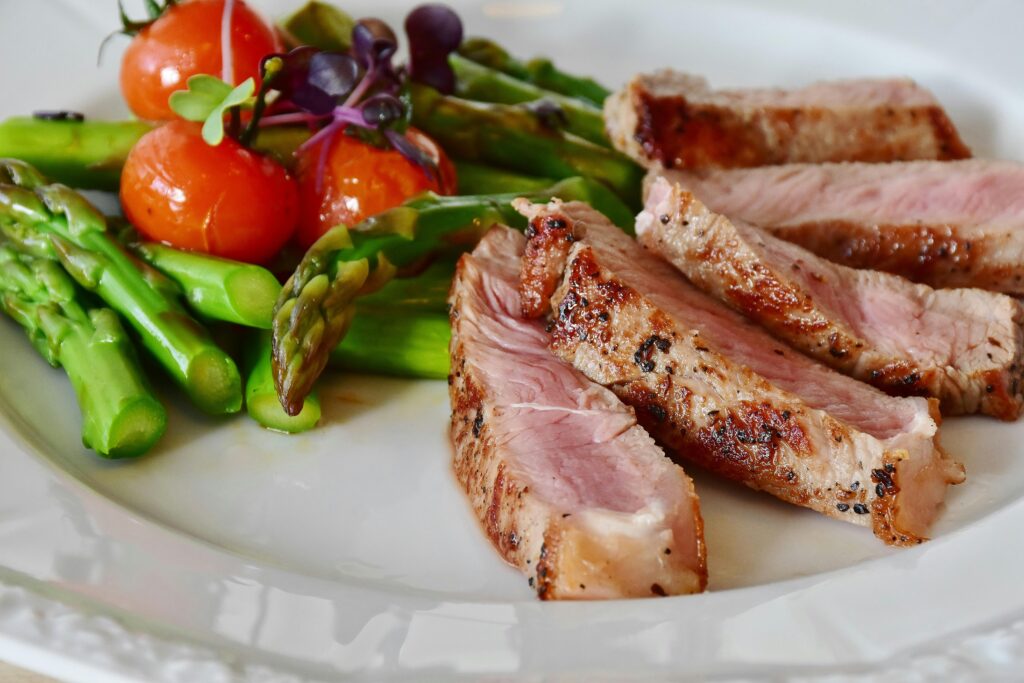
Protein Requirements: How Much Do You Need?
The question everyone asks: how much protein to lose weight? The standard recommendation of 0.8 grams per kilogram of body weight is designed to prevent deficiency, not optimize weight loss.
For weight loss, research suggests:
- Sedentary individuals: 1.2-1.6g per kg of body weight
- Active individuals: 1.6-2.2g per kg of body weight
- Very active/strength training: 2.0-2.4g per kg of body weight
For a 150-pound (68kg) person, that translates to roughly 80-165 grams of protein daily, depending on activity level.
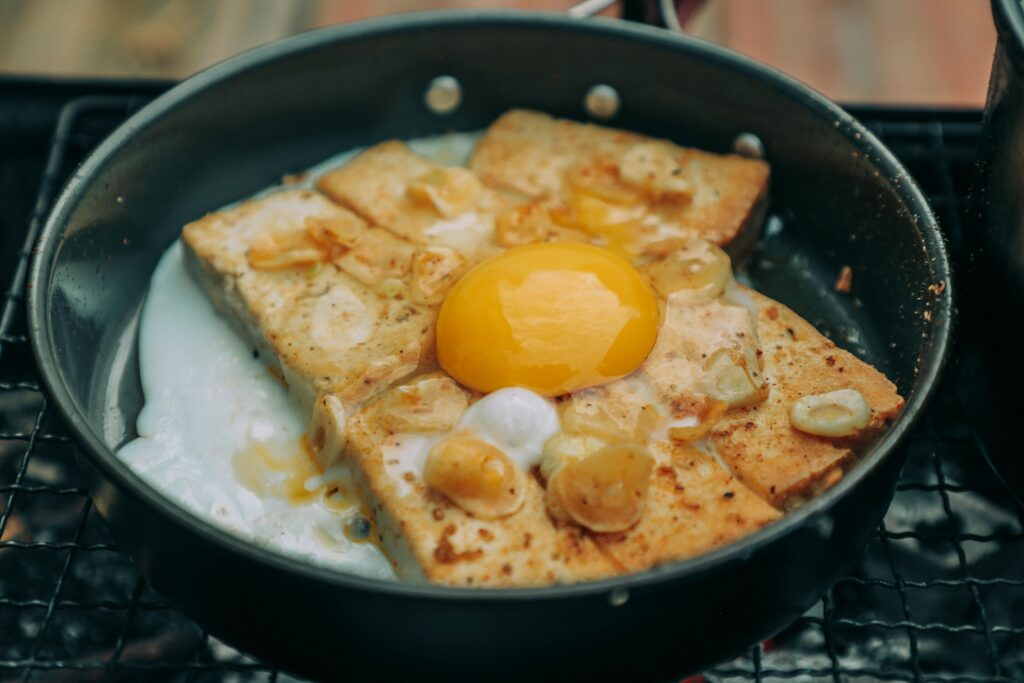
High-Protein Snacks That Satisfy
Sometimes you need something quick between meals. These high-protein snacks keep you on track:
Sweet Options:
- Apple slices with almond butter
- Greek yogurt with honey and nuts
- Protein balls made with dates and protein powder
- Cottage cheese with berries
Savory Options:
- Hard-boiled eggs with everything bagel seasoning
- Roasted chickpeas
- Turkey roll-ups with cucumber
- Edamame with sea salt
The key is planning. When hunger strikes, you want healthy options ready to go.
Vegetarian and Vegan High Protein Options
Plant-based eaters, I haven’t forgotten about you. Vegetarian high-protein foods can support weight loss goals:
Complete Plant Proteins:
- Quinoa (8g per cooked cup)
- Buckwheat (6g per cooked cup)
- Hemp seeds (10g per 3 tablespoons)
- Spirulina (8g per 2 tablespoons)
Protein Combinations:
- Rice and beans
- Hummus and whole grain pita
- Peanut butter and whole grain bread
- Lentils and quinoa
The trick is combining different plant proteins throughout the day to ensure you’re getting all essential amino acids.
Shopping Smart: Your High-Protein Grocery List
Here’s your protein-rich foods shopping guide, organized by store section:
Meat & Seafood:
- Chicken breast (boneless, skinless)
- Turkey breast
- Lean ground turkey (93/7)
- Salmon fillets
- Canned tuna in water
- Shrimp (frozen or fresh)
Dairy & Eggs:
- Greek yogurt (plain, low-fat)
- Cottage cheese (low-fat)
- String cheese
- Eggs (large)
- Low-fat milk
Pantry Staples:
- Dried lentils (red, green, black)
- Canned beans (black, pinto, chickpeas)
- Quinoa
- Protein powder
- Nuts and seeds
- Nut butters (natural, no added sugar)
Frozen Section:
- Edamame
- Fish fillets
- Frozen chicken breast
Meal Prep Like a Pro
High protein meal prep is your secret weapon for staying consistent. Here’s my foolproof system:
Sunday Prep Session (2 hours):
- Proteins: Grill 4-5 chicken breasts, hard-boil a dozen eggs, cook a big batch of lentils
- Carbs: Cook quinoa, roast sweet potatoes
- Vegetables: Wash and chop raw veggies, roast a sheet pan of mixed vegetables
- Assembly: Portion into containers for grab-and-go meals
Storage Tips:
- Glass containers keep food fresher longer
- Keep wet ingredients separate until eating
- Freeze half if making large batches
- Label everything with dates
This system ensures you always have high-protein options ready, removing the temptation to grab less healthy alternatives.
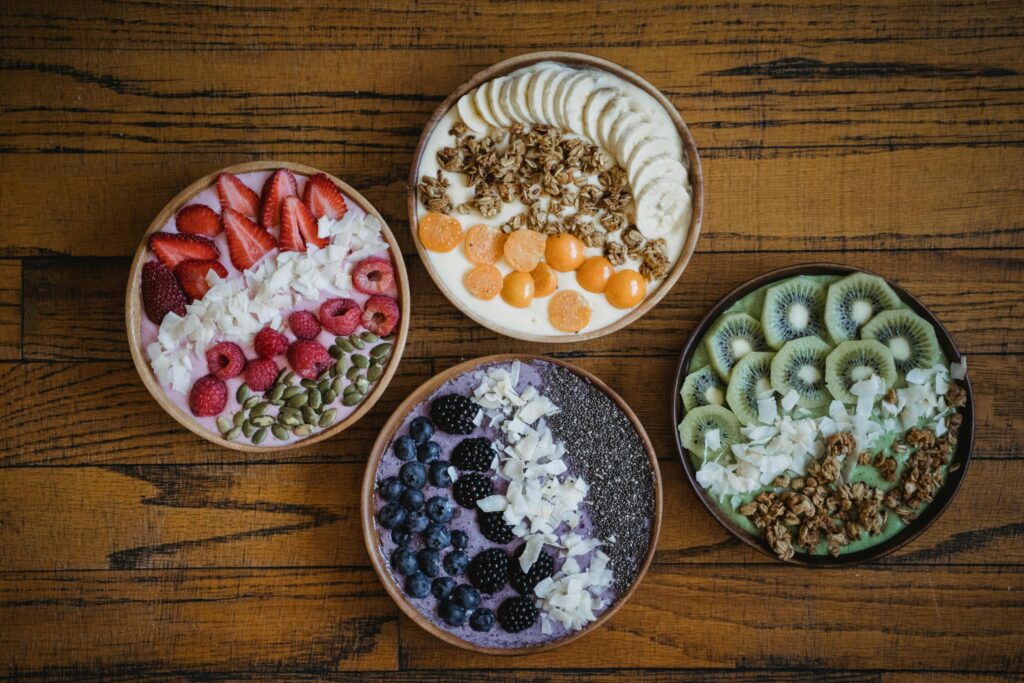
Eating Out: Navigating Restaurant Menus
Social life doesn’t stop when you’re focusing on protein for weight management. Here’s how to stay on track when dining out:
At Mexican Restaurants: Order fajitas without the tortilla, extra beans, grilled chicken, or steak
At Italian Restaurants: Chicken or fish with vegetables, ask for sauce on the side.
At Asian Restaurants: Tofu or chicken stir-fry with brown rice, steamed dumplings instead of fried
At American Restaurants: Grilled chicken or fish, side salad instead of fries. Ask for dressings on the side.
The key is not being afraid to ask for modifications. Most restaurants are happy to accommodate reasonable requests.
Supplements: Do You Need Protein Powder?
Protein shakes for weight loss can be helpful, but they’re not essential. Here’s when they make sense:
Good Candidates for Protein Powder:
- Busy schedule with little time for meal prep
- Struggling to meet protein goals through food alone
- Post-workout convenience
- Vegetarians/vegans who need protein variety
Types to Consider:
- Whey protein: Fast-absorbing, complete amino acid profile
- Casein protein: Slow-digesting, great before bed
- Plant protein blends: Good for vegans, often includes pea, rice, and hemp proteins
What to Look For:
- Minimal ingredients
- No artificial fillers
- Third-party tested
- Good taste (you’ll use it)
Remember: protein powder is a supplement, not a replacement for whole foods. Whole foods provide additional nutrients, fiber, and satiety that powders can’t match.
Troubleshooting Common Challenges
Let’s address some real-world obstacles you might face:
“I’m Always Hungry”: You might not be eating enough protein at each meal. Aim for 20-30 grams per meal, not just hitting your daily total.
“Protein is Expensive”: Focus on budget-friendly options like eggs, canned tuna, dried beans, and lentils. Buying in bulk and meal prepping saves money.
“I’m Bored with Chicken”: Branch out! Try different cooking methods, marinades, and spice blends. Explore fish, turkey, plant proteins, and eggs.
“I Feel Too Full”: Start gradually. If you’re used to low protein, suddenly jumping to 100+ grams daily can feel overwhelming. Increase by 10-15 grams weekly.
“I’m Not Losing Weight”: Protein helps, but calories still matter. Make sure you’re in a moderate caloric deficit while prioritizing protein.
The Long Game: Maintaining Your Results
Here’s what nobody talks about: the real challenge isn’t losing weight, it’s keeping it off. This is where protein and weight management shine.
Studies show that people who maintain high protein intake after weight loss are significantly more likely to keep the weight off long-term. Why? Because protein helps:
- Maintain metabolic rate
- Preserve muscle mass
- Control appetite
- Provide meal satisfaction
Think of protein not as a temporary diet tool, but as a permanent lifestyle upgrade. The habits you build now, prioritizing protein at each meal, planning, choosing satisfying foods – these become the foundation of lasting success.
Your Action Plan: Getting Started Today
Ready to harness the power of high-protein foods for weight loss? Here’s your step-by-step action plan:
Week 1: Assessment and Planning
- Calculate your protein needs based on your weight and activity level
- Track your current protein intake for 3 days (you might be surprised how low it is)
- Plan your grocery shopping list focusing on 5-7 protein sources you enjoy
Week 2: Implementation
- Start each meal with a protein source
- Prep 2-3 high-protein snacks for the week
- Try one new protein-rich recipe
Week 3: Optimization
- Fine-tune portions based on hunger and energy levels
- Experiment with meal timing
- Add variety to prevent boredom
Week 4: Habit Formation
- Focus on consistency over perfection
- Troubleshoot any challenges that arose
- Plan for long-term sustainability
Remember, this isn’t about following a rigid diet; it’s about building a sustainable relationship with food that naturally supports your weight loss goals.
The Bottom Line
High protein foods for weight loss aren’t just another diet trend; they’re a scientifically-backed approach to sustainable weight management. By understanding how protein affects your metabolism, appetite, and body composition, you’re equipped with knowledge that goes far beyond counting calories.
The beauty of focusing on protein is that it works with your body’s natural systems rather than against them. You’re not fighting hunger, you’re satisfying it more efficiently. You’re not slashing calories dramatically; you’re choosing foods that naturally reduce your appetite. You’re not losing muscle, you’re preserving and building it.
Start small, be consistent, and trust the process. Your body has an incredible ability to adapt and thrive when you give it the right tools. Protein-rich foods are one of the most powerful tools in your weight loss toolkit.
The science is clear, the strategies are proven, and the choice is yours. Your journey to sustainable weight loss starts with your next meal; make it a high-protein one.
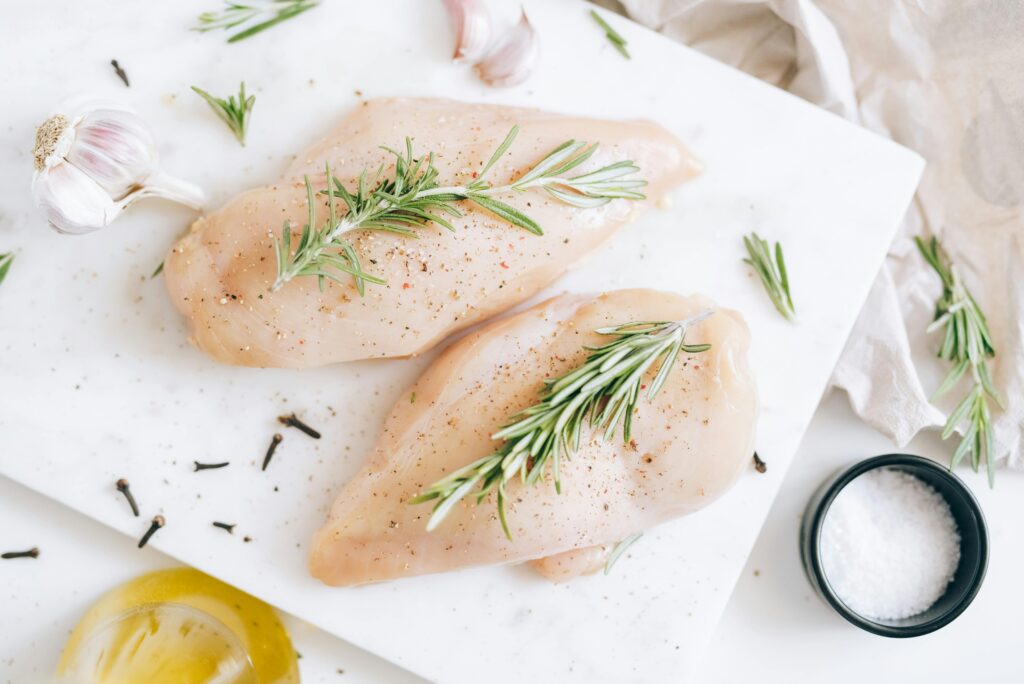
What’s your favorite high-protein food for weight loss? Have you noticed changes in your appetite when you increase your protein intake? Share your experiences and questions in the comments below – I’d love to hear about your protein-powered transformation!
Ready to transform your relationship with food and finally achieve sustainable weight loss? Save this guide, share it with someone who needs it, and remember: every protein-rich meal is a step toward the healthier, more energetic you that’s waiting to emerge.





